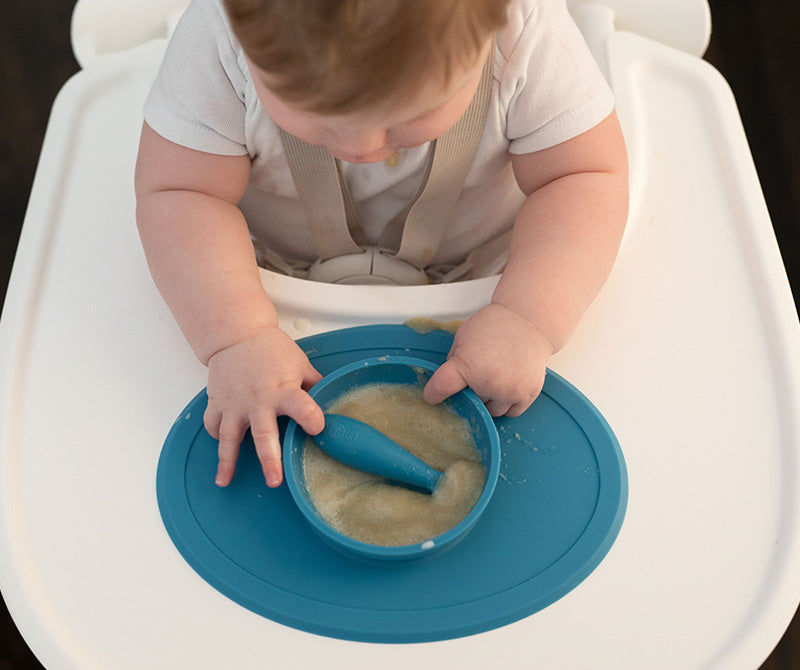Parents oftentimes come to me to help them safely transition their baby from breast (or bottle) to puree foods. Here are a few of the tips I provide in feeding therapy to make purees tasty, safe and fun for both parents AND baby. Hooray for purees!
Safety: When a parent chooses to start with purees, I explain that I recommend purees for the first few weeks of solid food introduction. Once baby’s swallow is safe, start introducing small amounts of soft foods too. I recommend this tactic to ensure that baby doesn't stay in the comfortable puree phase for too long. This advice comes from my experience with families that stayed on purees so long that their baby was fearful of eating any other texture (which means they have missed some important feeding milestones).
Sustain: When parents start with purees as baby’s first introduction to food, I hope to sustain this texture in that child’s food repertoire for a lifetime. I say this because (like most adults) I started eating with purees and I still eat and enjoy purees (e.g., salsa, pudding, guacamole, applesauce, mousse, soups and mashed potatoes). The only caution is that we want purees to be a part of a child’s mealtime, not the only texture they will eat. It’s important to make sure that baby can handle a variety of tastes and textures that are safe and appropriate for their developmental age.
Sugar: Fruits make amazing purees and, because of their sweetness, they can help veggie purees become more palatable for kids. One of my favorite fruits to mash into a puree is banana. This fruit packs a lot of bang for its buck since it has a slow-release sugar. This means that the natural sugar provides sustained energy for toddlers. Bananas also are a perfect on-the-go fruit (they are compact and come in their own biodegradable packaging) AND they mash easily for a quick puree. Apple, avocado and pear are also excellent fruit choices for the puree phase.
Sweet Potato: Another favorite puree I like to introduce to my clients is yummy variations of sweet potatoes. Sweet potatoes store well and are available most of the year, so it’s a great base to introduce other tastes. It also maintains its orange color when blended with most other fruits and veggies, allowing a bright color to remain in your toddler’s food repertoire. Pictured is a puree combination I love to introduce in feeding therapy (apple, carrot and sweet potato).
Storage & Serving: A lot of the parents I work with make their own purees instead of buying store bought brands. When I watch these parents work so hard to make nourishing homemade purees, I encourage them to store their food in glass. And, as far as serving, I recommend using food safe silicone products that suction to the table, like our Tiny Bowl or Mini Bowl. This makes for less mess and helps baby self-feed too!
How does your family serve purees? What are some of your baby’s favorite puree blends? Have you used our Mini Bowl or Tiny Bowl on your feeding journey with your little one? Tag us in your mealtime pictures #ezpzfun #tinybowl #minibowl #puree.



